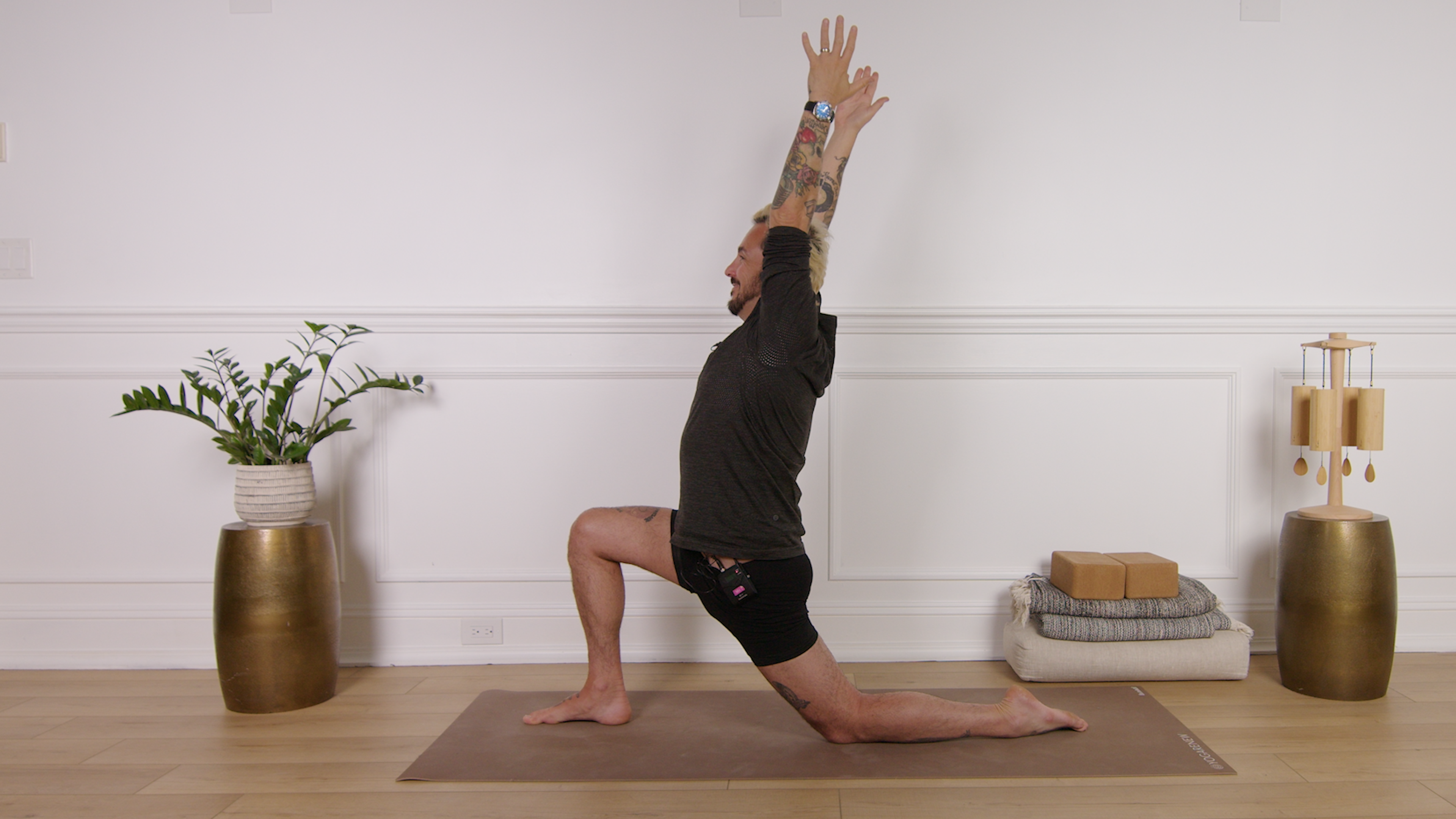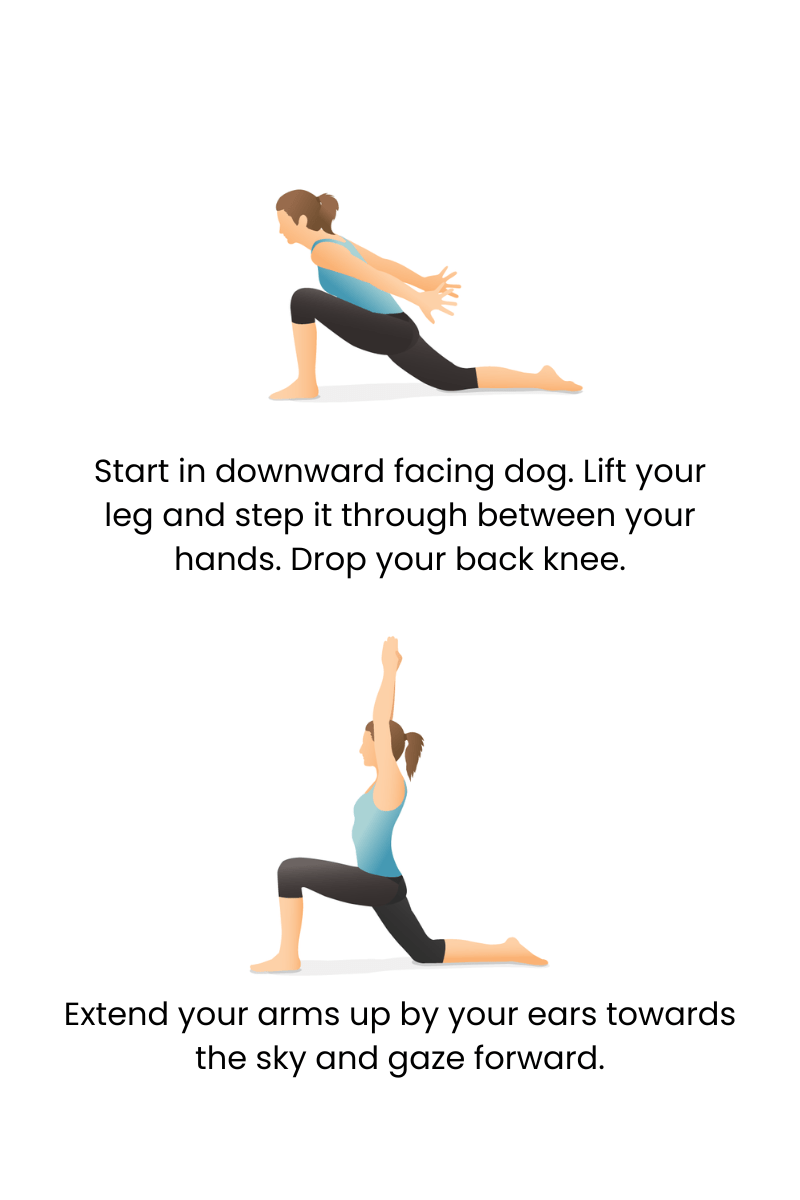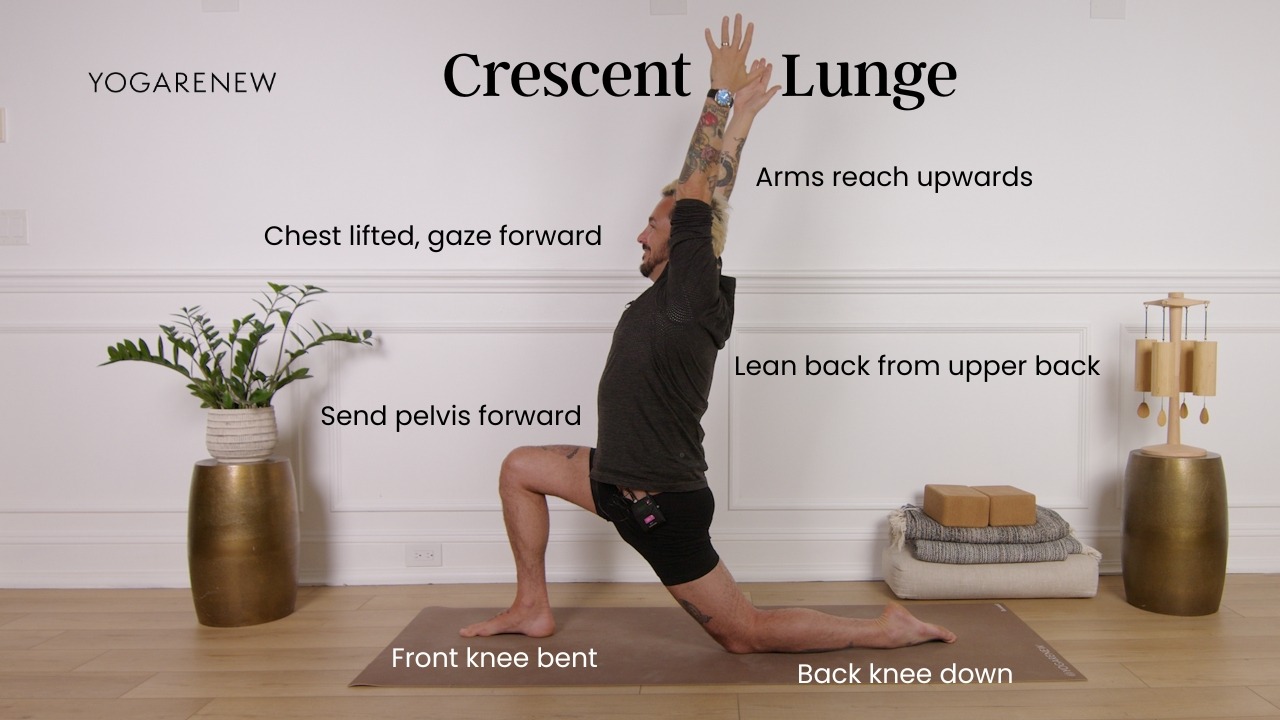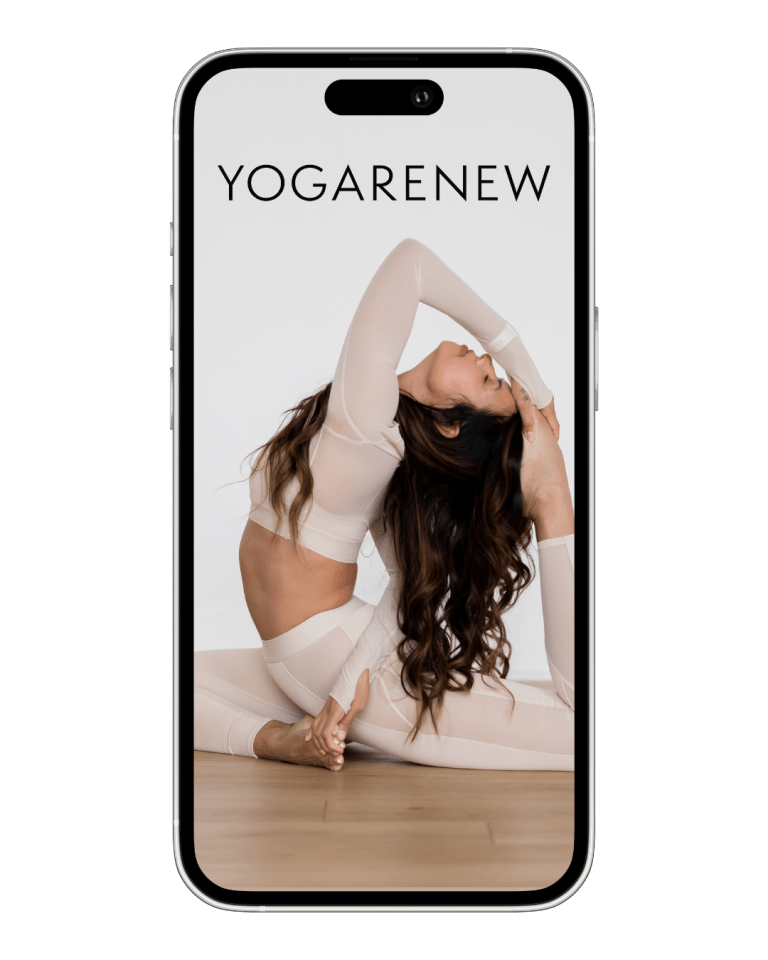What is Crescent Lunge?
English Name: Crescent Lunge Pose
Sanskrit Name: Anjaneyasana (pronounced AHN-jah-nay-AHS-uh-nuh)
Category: Standing Pose, Hip Opener, Backbend, Strength-Building, Intermediate

English Name: Crescent Lunge Pose
Sanskrit Name: Anjaneyasana (pronounced AHN-jah-nay-AHS-uh-nuh)
Category: Standing Pose, Hip Opener, Backbend, Strength-Building, Intermediate
Crescent Lunge Pose, or Anjaneyasana, is a dynamic standing posture that strengthens the legs, stretches the hips and chest, and builds stability throughout the body. It’s often used in vinyasa flow sequences or as a transitional pose in Sun Salutations. With its deep lunge and lifted arms, Crescent Lunge creates both power and openness, engaging the whole body while improving balance and focus.
Named after the young Hindu deity Hanuman (Anjaneya), this pose symbolizes strength, devotion, and expansion. It’s accessible to many practitioners with slight modifications and can be a gateway to deeper lunges, backbends, and standing balance postures.


1. Knee or Hip Injury: May aggravate joints—modify with props or reduce depth
2. Low Back Pain: Engage core and avoid deep backbend
3. Balance Issues: Practice near a wall or widen stance for stability
4. Recent Surgery (Lower Body or Abdomen): Consult a physician before practicing
5. High Blood Pressure: Keep hands at heart center instead of overhead
Crescent Lunge Pose is a dynamic posture that strengthens, stretches, and stabilizes. It activates the legs and core while cultivating an open heart and grounded energy. Often used in flow classes to build heat and endurance, it also teaches balance and body awareness. Practicing Anjaneyasana regularly can improve posture, build lower body resilience, and develop calm strength both on and off the mat.
Yes, the terms are often used interchangeably. Some teachers may differentiate slightly depending on hand or torso position.
Widen your stance, lower the back knee, or practice near a wall for support.
Yes—start with Low Lunge and use props as needed. Over time, Crescent Lunge can help increase hip flexibility.

Explore classes & pose tutorials for any style, format, duration or experience level with a free account in the YogaRenew app. Or subscribe and gain access to workshops, live classes and more.